Impact
Always quick to strike
Be it on election posters, in caricatures or in art: The Woodcutter strikes a hefty blow.
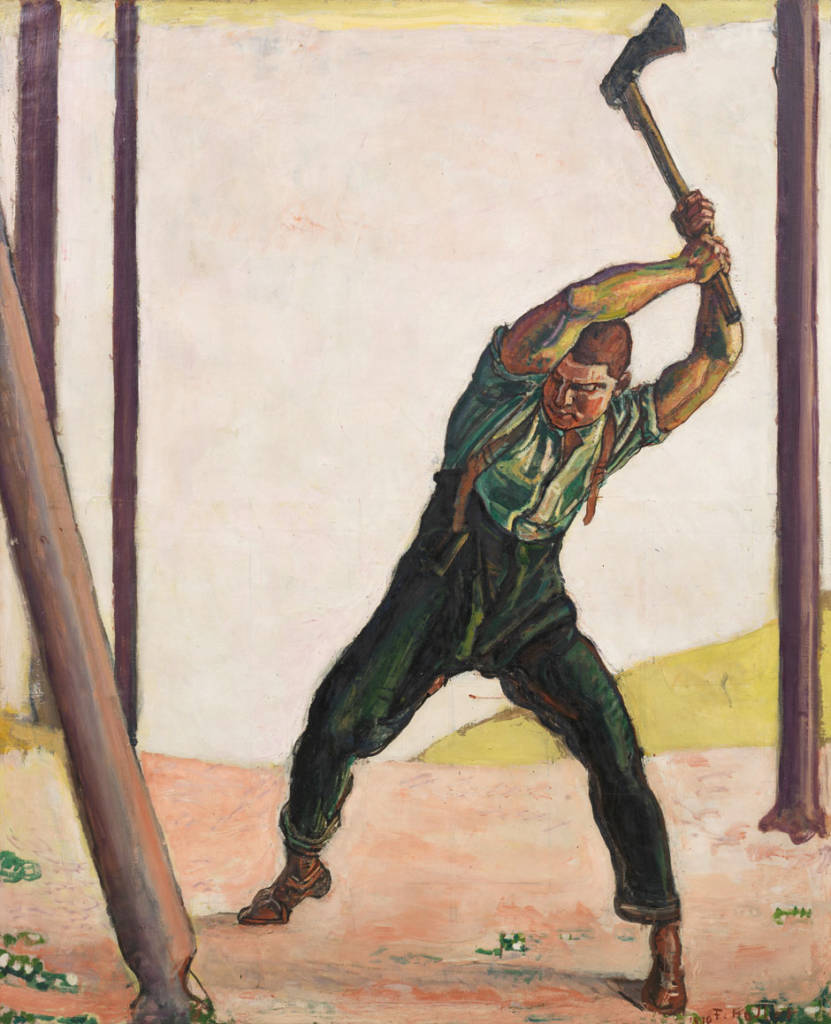
The Woodcutter rose to fame very quickly. Shortly after the motif was created, it became popular in caricatures and for commenting on politics. Increasingly, contemporary art is questioning the vigorous Woodcutter and his symbolism.
Not long after the first presentation of TheWoodcutter in Germany in 1910, the first caricatures and satirical drawings using the popular motif appeared. TheWoodcutter quickly became part of the European “pictorial canon”. In addition to art-specific themes, the Woodcutter was caricatured above all in politics and in connection with the two world wars. In Germany, the motif was so successful that it was even used to comment on domestic policy debates.
The German oak resists!
In 1914 Arpad Schmidhammer depicted Ferdinand Hodler as a woodcutter who struggles with a huge German oak tree and gets himself in a twist. When Hodler signed the protest against the bombarding of Reims cathedral by the Germans, people in the neighbouring country scorned him from then on. Fearing the effect on his clients, Hodler apologised soon afterwards for protesting.
“– But, Mr Hodler, how could you sign the mendacious declaration against the German barbarism?
– Yes, but you know, every better-off German already has a woodcutter or a reaper by me hanging on the wall – it’s high time I looked around for French or English clients!” “Hodler!”, in Jugend, 7.10.1914
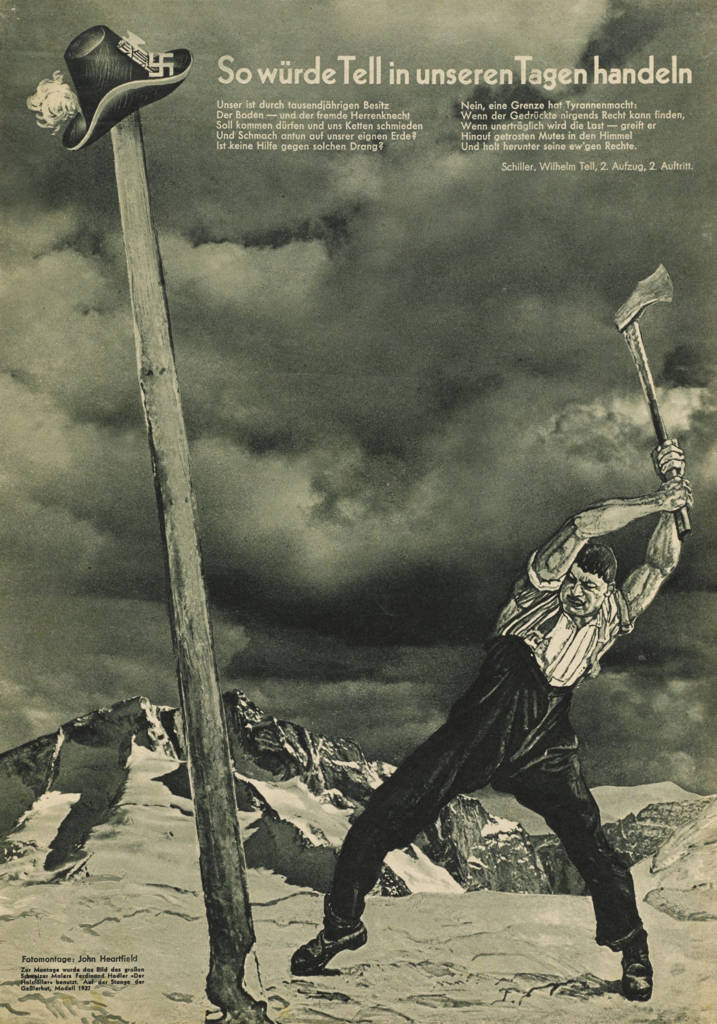
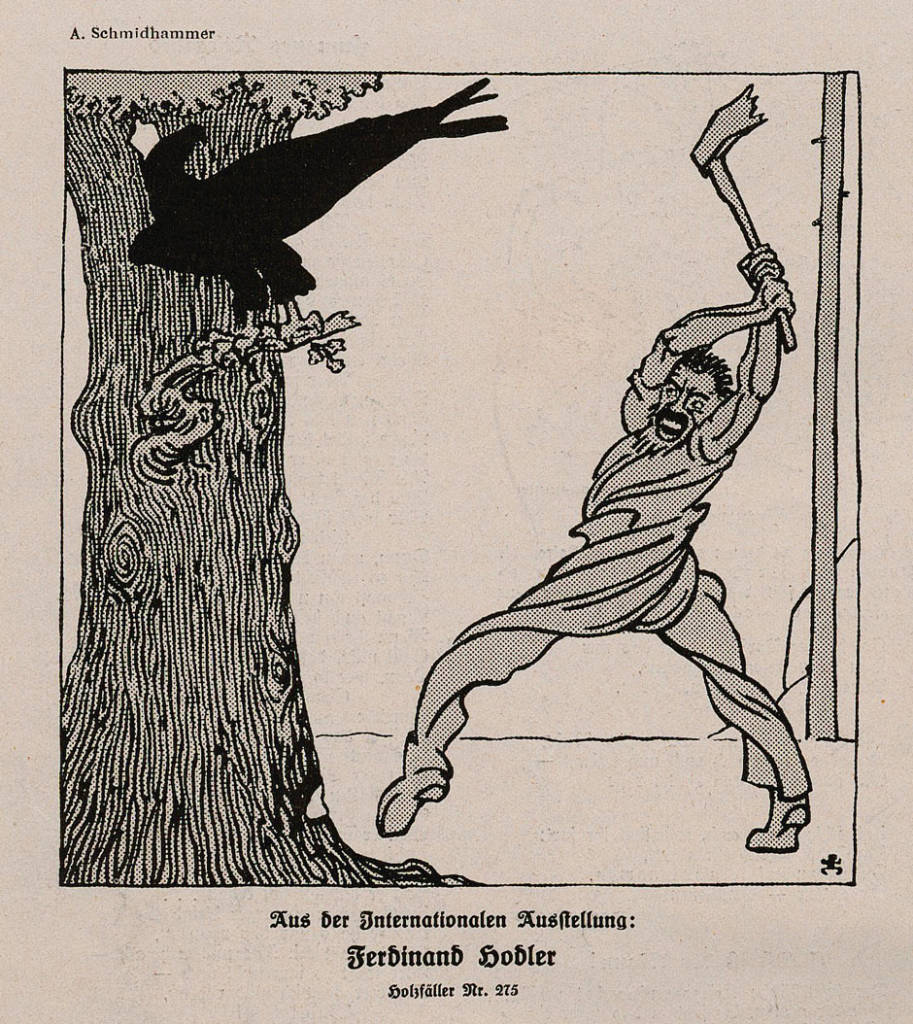
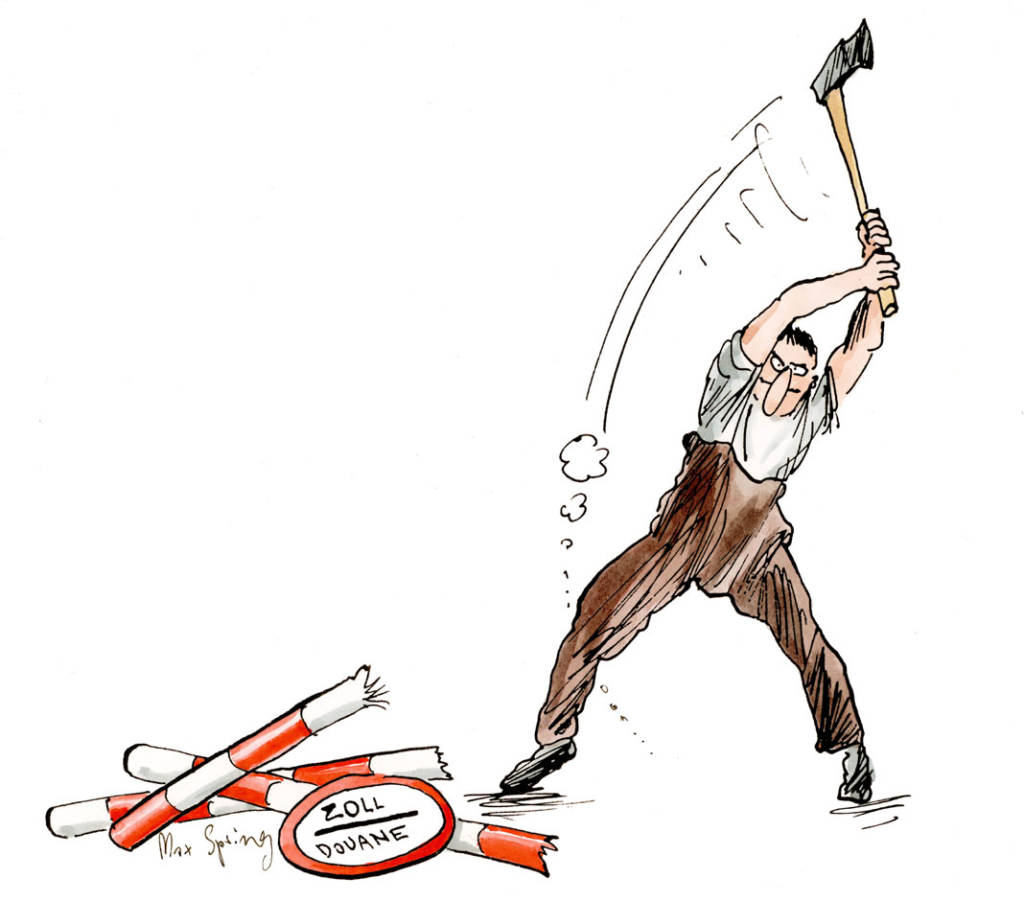
The motif can be easily employed for political commentaries, even today. In 2005 Max Spring drew TheWoodcutter splitting a wooden barrier at a border crossing. The drawing illustrates the debate about the free movement of persons between Switzerland and the EU countries, whereby the woodcutter here represents progressive values as he battles against border controls.
Women take up axes!
Nonchalant but determined, and with an axe on her shoulder, the artist Marie-Antoinette Chiarenza from the artists’ group RELAX strides towards the viewers in the photograph Je suis une femme pourquoi pas vous ? (I’m a woman, why not you?); in the background is a picture of Hodler’s Woodcutter. A challenge? The photograph has a feminist message: Women are now taking up the axe themselves. At the same time, RELAX also cites Joseph Beuys’ pose in La rivoluzione siamo Noi also takes a feminist approach to the Woodcutter and with her Pin-up à la tronçonneuse (Chain saw pin-up) parodies sexist depictions in girlie calendars of the kind still to be found hanging in numerous workshops or repair shops.
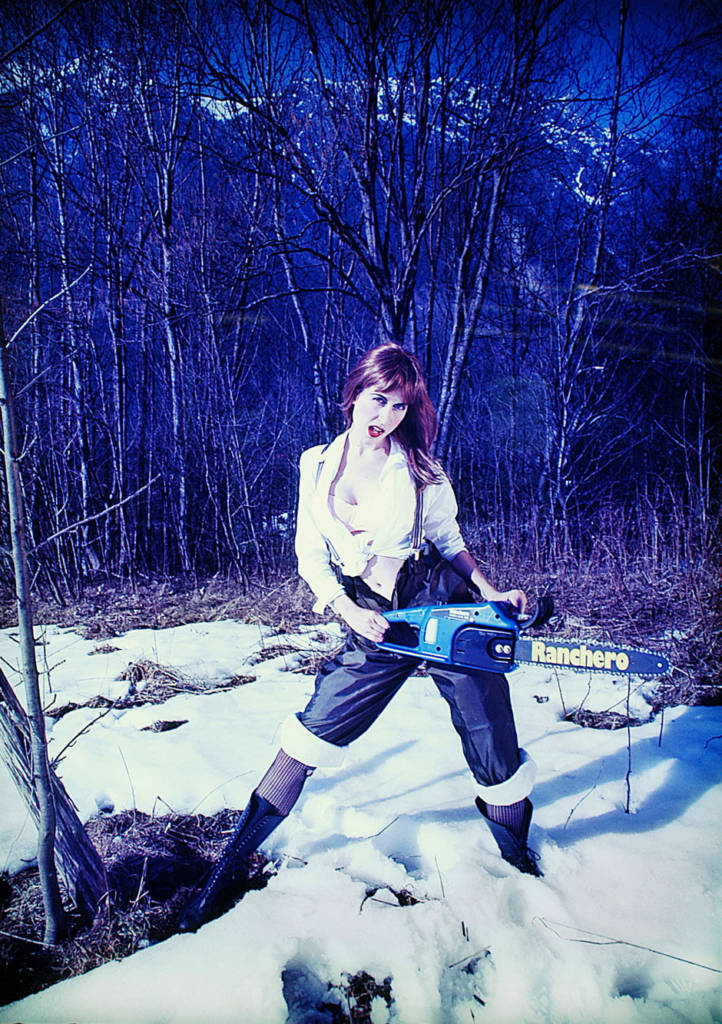
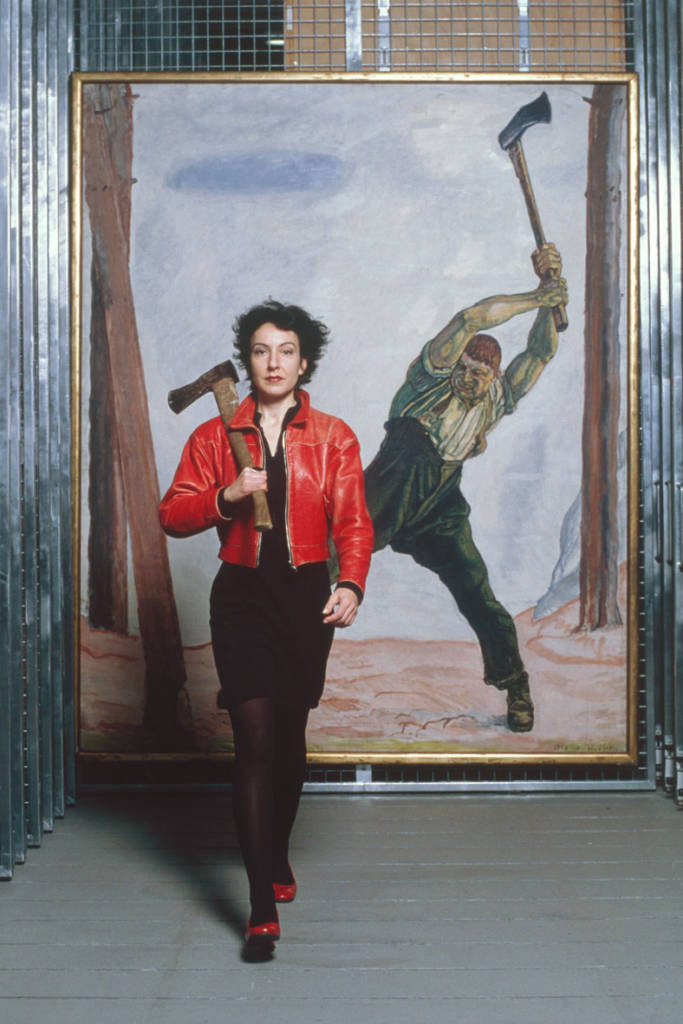
A Wood full of Axes
The artist Thomas Hirschhorn focused on the axe in The Woodcutter as a symbol of right-wing political monopolization. In the exhibition Swiss Made II in the Kunstmuseum Wolfsburg he presented countless homemade axes of all sizes. Hirschorn was alluding to The Woodcutter in the Federal Council’s office, who has become an expression of aggressive, conservative politics. The axe stands for typical Swiss values like earthiness, insubordination and stubbornness.
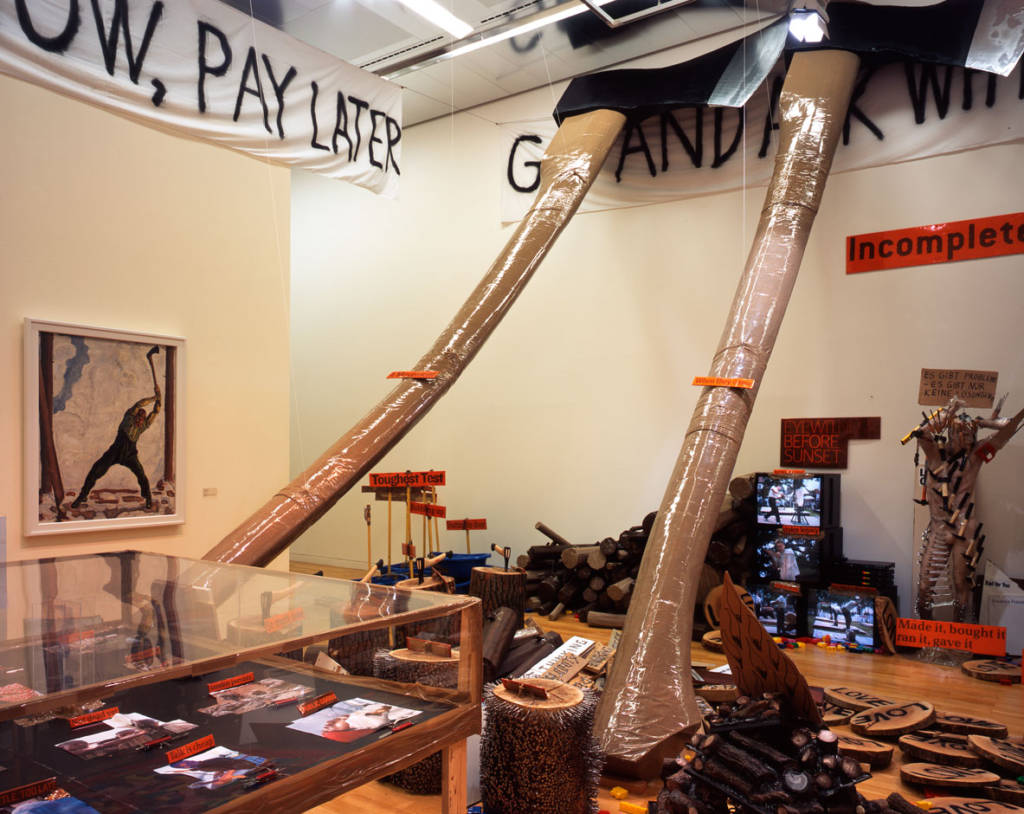
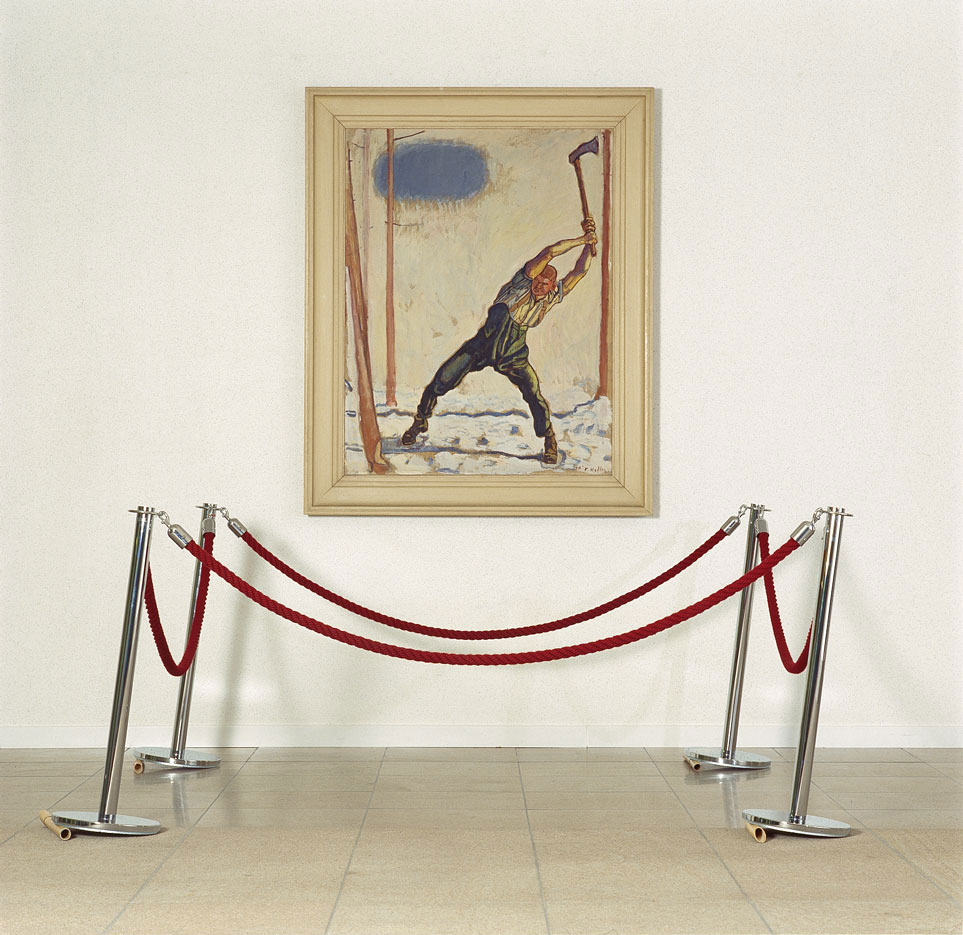
Aslant
In 1995 Raoul Marek combined a Woodcutter painting with a barrier made of cords and brass posts for his intervention Lieber F.H. … (Dear F.H. …). In it, the posts slant in the opposite direction to the felled tree thus rendering the protective function of the barrier absurd. Marek’s installation reflected the political situation in the country in 1992, when Switzerland rejected accession to the European Economic Area and was therefore in danger of becoming disconnected from the rest of the world.